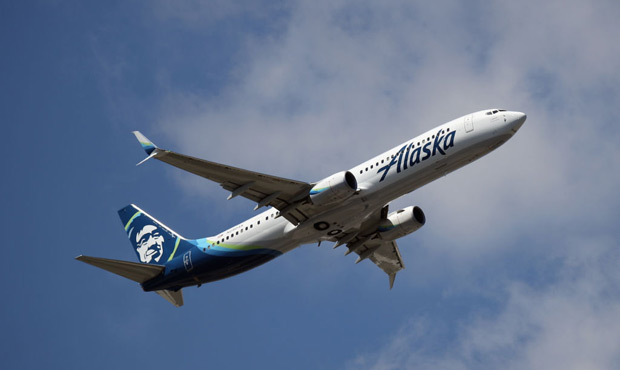Why Alaska Airlines may weather economic storm better than most airlines
Mar 26, 2020, 12:39 PM

(Photo by Bruce Bennett/Getty Images) (Photo by Bruce Bennett/Getty Images)
(Photo by Bruce Bennett/Getty Images)
The impact that the coronavirus outbreak has had worldwide on the airline industry is unprecedented.
This week, Seattle-based Alaska Airlines cut 75 percent of their flights schedule for April and May and according to Andrew McIntosh, who covers aerospace and manufacturing for the Puget Sound Business Journal, they don’t expect things to get better until the fall at the earliest.
“Nobody is getting into airplanes,” McIntosh told KIRO Nights. “It’s something they have never before seen, not even after 9/11 or the financial crisis.”
Port of Seattle looks to protect workers by delaying cruise season indefinitely
For the 12,000 employees of the airline, most from the greater Seattle area, the cancelled flights will have a significant impact.
“It’s another economic body blow to the region,” McIntosh said. “For workers, it means a hiring freeze, a pay freeze and the company pretty much begging for people to take unpaid leaves of absence in exchange for getting their health care insurance still included. If you are a cash contractor, you are going to be let go almost immediately.”
McIntosh pointed out that the company’s managers and executives have taken pay cuts from 20 percent to 100 percent, and that the board of directors have decided to forgo their own cash retainers through September 30.
CEO of the Alaska Airlines group, Brad Tilden, is among those who are not taking a paycheck until further notice. According to McIntosh, his focus is moving forward and he has taken some uncharacteristically extreme measures in attempts to do so.
“Brad Tilden is a pretty modest guy; he doesn’t hyper-inflate his industry rhetoric,” McIntosh said. “The company borrowed $400 million on its existing line of credit and secured another loan for $425 million more. These actions are unprecedented, but they are truly unprecedented times. He just basically said they have been around 88 years to serve customers and communities up and down the West Coast and provide good jobs for people and they want to be there when we get through this as well, so they have taken some really drastic, swift measures.”
As dire as the situation appears for Alaska, owning over 100 of their own aircraft helped them acquire those loans. Many smaller airlines who lease their planes will have worse chance of surviving. In order for any of the airlines to survive, McIntosh believes they will need help.
“Basically the pilots and the flight attendants and the mechanics that make the airlines work, they are like an economic engine of the country’s economy and if we want them to be around, we need to provide some measure of assistance to ensure that people continue to get paid or like many of the airlines in other parts of the world, they are basically just going to stop flying and wind down,” McIntosh said.
When it is once again safe to fly, demand will dictate how many flights are added. McIntosh believes that demand will be great.
“I kind of think that after we are all locked up in the house for a month, 2, 3, 4 months, when we are given the okay to start flying again, there’s going to be huge demand. That’s what Alaska Airlines is banking on, that’s what others are banking on as well,” McIntosh said.
Get the latest updates on the coronavirus response
Listen to the KIRO Nights weeknights from 7 – 10 p.m. on KIRO Radio, 97.3 FM. Subscribe to the podcast here.













